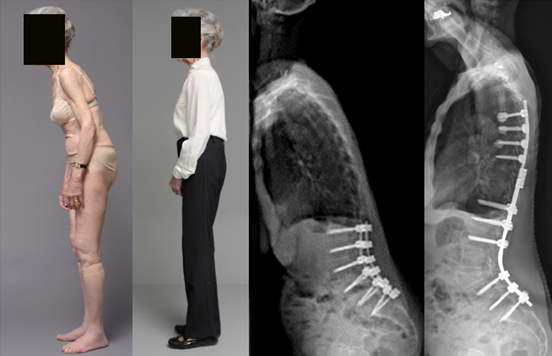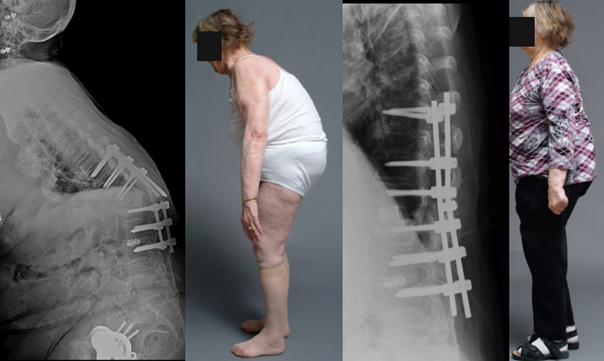Revision Surgery
When is revision surgery necessary?
If stiffening surgery of the spine is followed by chronic or increasing pain, it is important to obtain further clarification. The most common causes of continuing complaints are:
- insufficient healing of bones (pseudoarthrosis) and loosening/breakage of the implant
- vertebral fractures at the upper or lower end of the fixation due to inferior bone quality
- malpositioned fixation of the lumbar spine, preventing the patient from standing upright (iatrogenic kyphosis)
- infection of an implant
- insufficient decompression of the spinal canal in previous surgery
- misalignment of a screw, affecting nerves
What does revision surgery entail?
Revision surgery is usually very complex.
The operation must remove the defects of a previous operation mentioned above. The spinal canal is widened, the implant is exchanged and the fixation is relocated or expanded, if necessary. Additionally, lumbar lordosis must be restored for the patient to be able to stand upright.

Example 1: Revision surgery to erect the spine after misalignment following another operation

Example 2: Revision in a patient with spinal misalignment due to a broken implant
